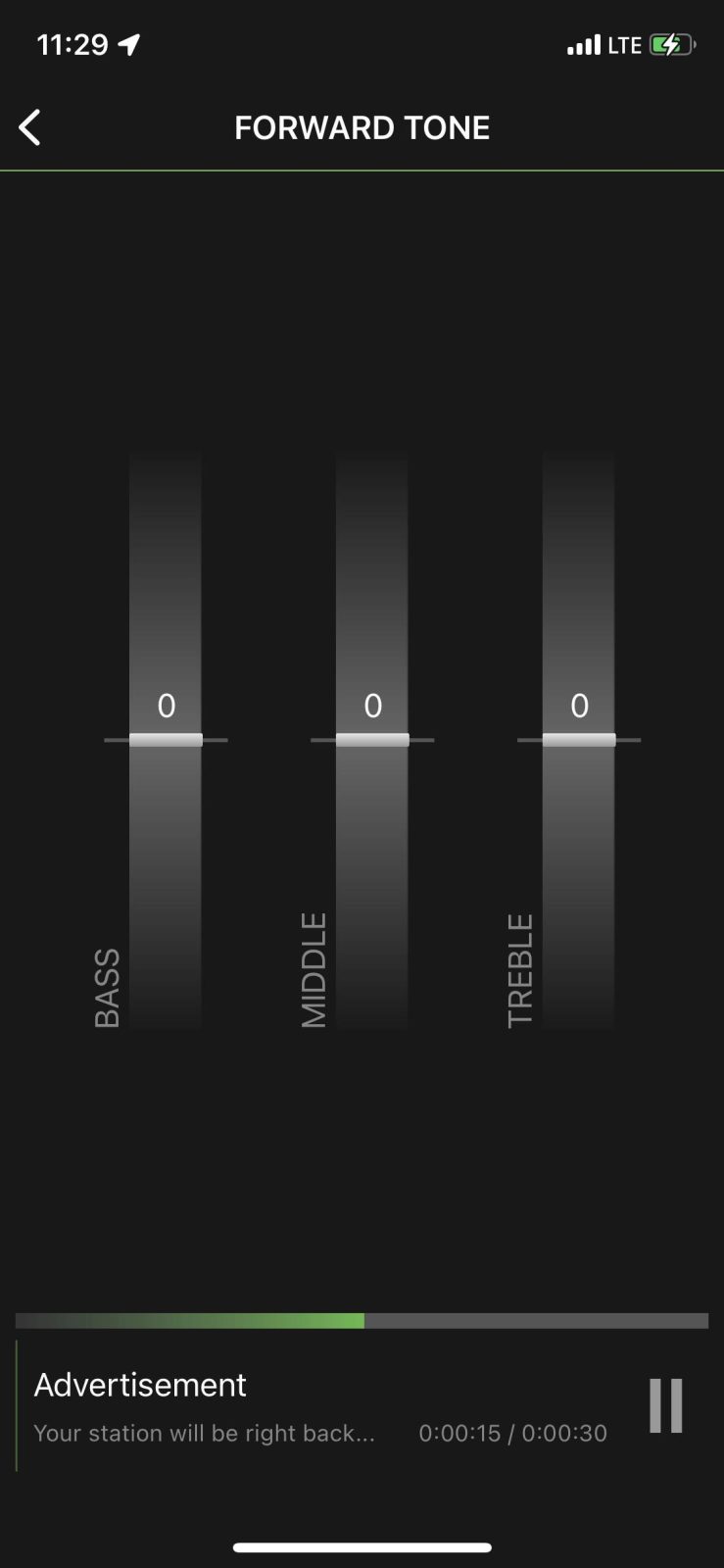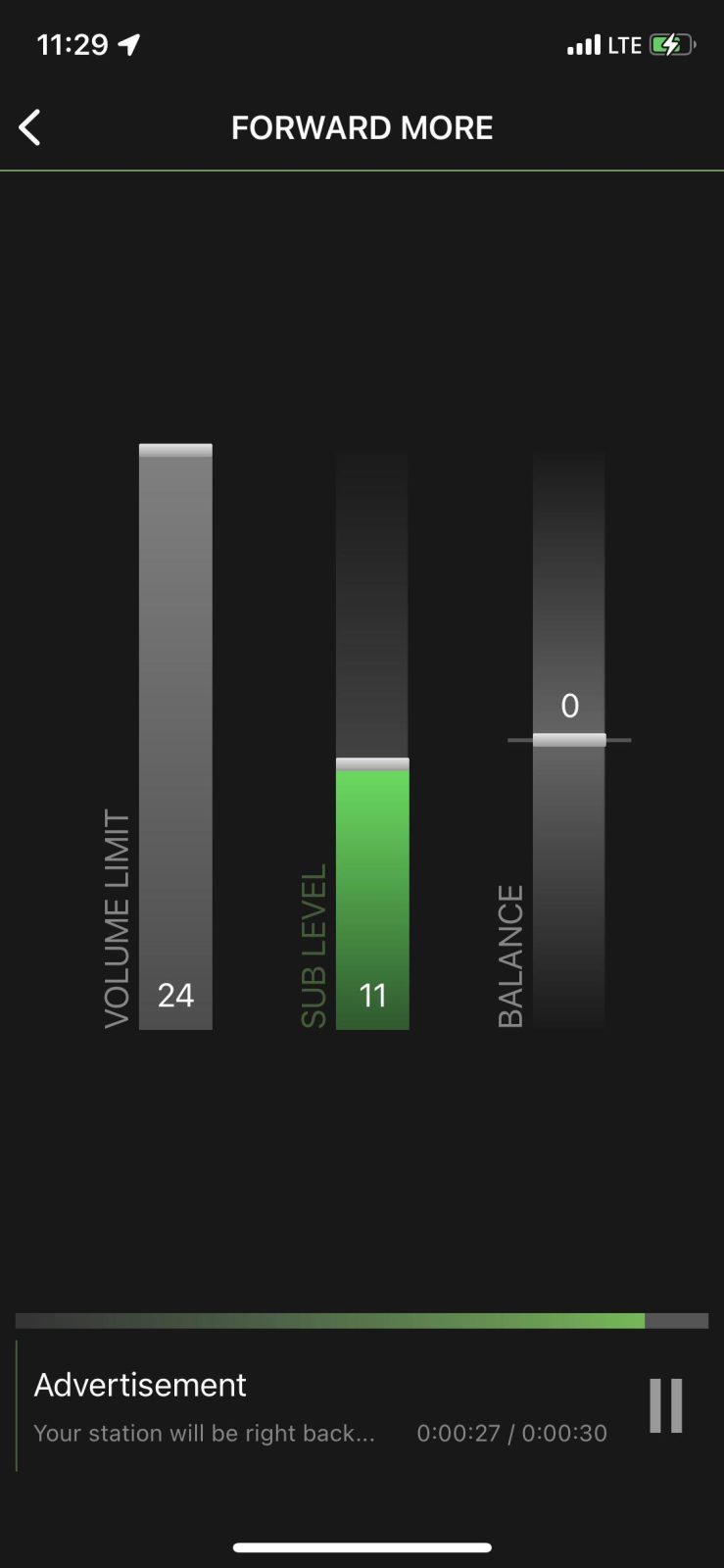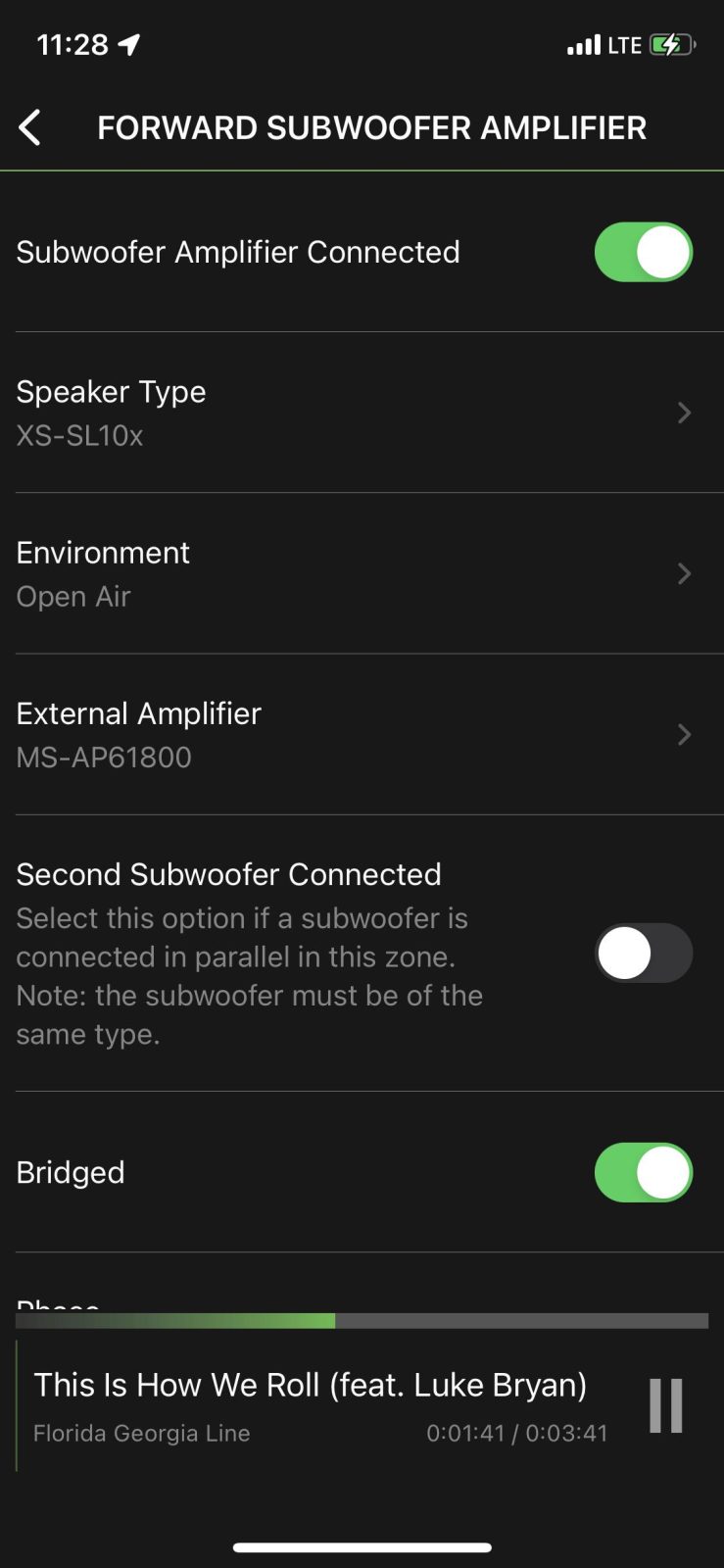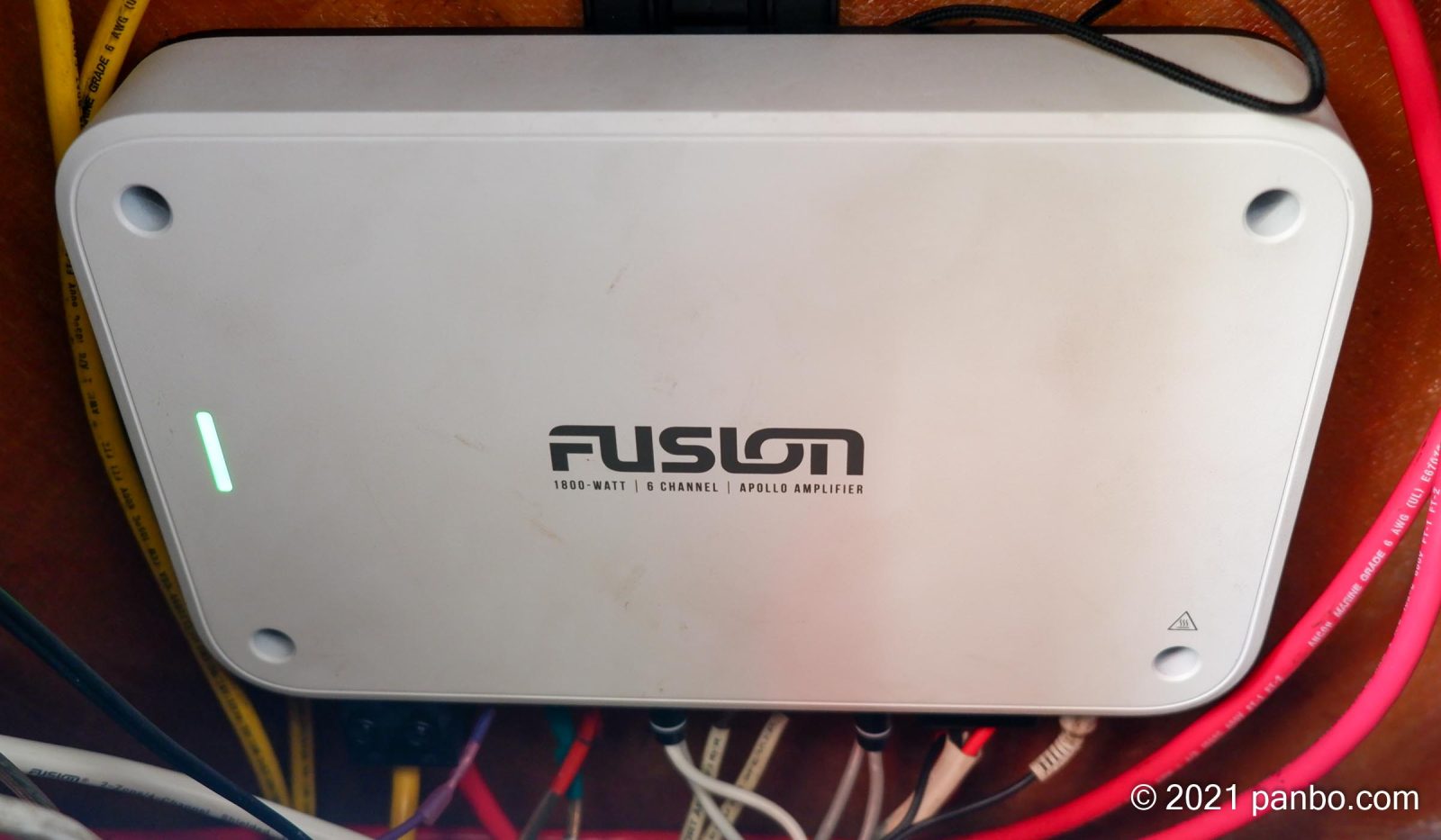Fusion Apollo Amps, easy tuning and powerful sound
Fusion’s new Apollo amps address several common difficulties with installing and tuning boat stereos. They offer easy installation and tuning from a smartphone application. On paper, there’s a series of improvements, but it wasn’t until I installed one that I appreciated their biggest improvement. It’s rare to find an amp in an easily accessible location. Fusion understands this and made an amplifier designed not to be visited once it’s installed. But, how do they do on the water? I’ve been evaluating the six-channel model on Panbo(at), so read on for more about the installation and tuning process and most importantly, how it sounds.

The Apollo line of amplifiers join Fusion’s Apollo head units and leverages the digital signal processing (DSP) capabilities of those stereos. There are 2, 4, 6, and 8-channel models plus a monoblock subwoofer model. A quick read through the specs illustrates the attention Fusion has paid to make them easy to install, easy to operate, and high performance.
Fusion is direct and to the point. These amps work with Fusion speakers and head units and not with any others. In fact, when you open the box, there’s the yellow notice seen above looking right back at you. On the product website, Fusion lists the MS-RA770, MS-RA670, WB760, and MS-RA210 as the only compatible head units.
Installation
Opening the box for the new amp caused me to wonder if Fusion designed them just for me. I have my amplifier installed in the lower portion of the center console of the boat. In order to work on it, I have to lie down with my feet hanging out of the console and my shoulder resting on the ground. This means that mounting an amplifier in the compartment is a pretty miserable experience. Especially with high-quality, relatively heavy models.
The Apollo amps include a mounting bracket to ease installation. The lightweight bracket is much easier to install than holding the whole thing in place while screwing it in. The amp then hooks to the bracket and a locking clip holds it in place. If you prefer, there are four screw holes allowing direct mounting. No matter how you mount them, once installed, you won’t need to access them again. The Fusion-Link app allows completing the DSP tuning process.
Continuing their efforts to avoid all reasons to access the amplifier, Fusion equips the Apollo amps with electronic circuit breakers that will reset themselves. So, not even a blown fuse will require accessing it. There’s also over and under-voltage protection, reversed polarity and short-circuit protection, and over-temperature protection. The LED on the front left of the unit will light green when everything is operating normally, orange if a recoverable fault has occurred, and red if a critical fault has occurred that requires powering the amp off and back on. Lastly, with ignition protection, mounting in gasoline engine compartments is safe.

One of the first improvements is the addition of removable connection blocks for power, remote turn on, and all speaker connections. Fusion isn’t the first to add these. In fact, when I reviewed their Signature Series amps, I thought the lack of removable connectors was an omission. Especially in light of the number of companies that have long provided this feature. Fortunately, Fusion didn’t stop at catching up with what other brands are already doing. Instead, they went a step further with easing installation.
In addition to the removable speaker connectors, they include a device they call the high power mode adapter. This is a piece of plastic that the speaker connector snaps into. This adapter blocks the middle two wiring connections and one RCA input. Additionally, there’s a magnet that signals the amp and puts that zone into bridged mode. The blocked connections ensure the proper connection of a subwoofer or other mono speaker.
Configuration
Fusion calls the new tuning system Easy Tune and I’d say it’s well named. Tuning is comfortably performed from a mobile device, instead of with a small screwdriver while standing on your head. This includes all aspects of the tuning since there are no knobs or adjustments of any kind on the amplifier.
Each zone’s DSP profile is individually configured with information on the speakers, amplifier, subwoofer, and subwoofer amplifier used, as well as information on the listening environment. Once settings are entered, you send the DSP profile to the head unit and it applies and stores them. You can always come back in and make additional tweaks as necessary.
When making DSP changes, you won’t hear the changes until they’re sent to the head unit. That’s different than when you make tone adjustments. So if you want to hear the difference you will need to make the change, apply it, then compare.
In a conversation with Fusion’s Auckland New Zealand-based product management and engineering, I confirmed that the amp isn’t tuned by the application of DSP settings. Instead, the signal that’s sent is processed by the DSP circuitry within the head unit prior to sending it to the amp. There’s a lot that’s being done when you select your speakers, environment, and connection mechanism. The head unit will apply the appropriate DSP changes based on this information, plus they will limit the amount of power the amp produces in order to protect the speakers.
Performance on the water
I tested the Apollo amp with two pairs of Fusion XS speakers and a 10-inch subwoofer connected. At the bow of the boat, I have a pair of 7.7-inch speakers and at the helm, I have a pair of 6.5-inch speakers. I removed a Fusion Signature SG-DA61500 six-channel amplifier to install the Apollo unit.
When I first turned on the system after I’d finished up the installation, the sound was a little flat. This wasn’t too surprising since I knew I hadn’t applied the DSP profiles yet. With the appropriate DSP settings changes made and applied, the sound quality and the listening experience changed notably. The overall sound quality improved, and the flatness I’d previously observed disappeared, replaced with tight bass, crisp highs, and an overall pleasant sound.
The XS speakers are Fusion’s value speakers, which makes the sound quality produced by the system even more impressive. When played to their limits I can hear some harshness in the upper registers of the speakers and they lack the low-end emphasis of a higher-end speaker. But, there’s no doubt in my mind the Apollo amp improved their performance, even from the already good performance of the Signature Series amp. Part of the difference in sound may be attributable to the extra 50 watts per channel RMS — 100 watts for the Signature versus 150 watts for the Apollo — the Apollo produces.
That does bring me to one nit I’d like to pick with Fusion. They’ve long quoted a peak number of some sort and emblazoned it on the front of their amps. In the case of my My MS-AP61800, it boasts of 1,800 watts. The amp produces 150 watts per channel across six channels or 900 watts RMS. I’m aware that peak output will be higher than that 900-watt number, but there’s a very good reason the audio industry standardized on comparing RMS output.
I’ve tested the speakers at nearly all volume levels and all speeds. Part of the DSP tuning is power limiting to match the speakers’ capabilities. With 150 watts available and the XS speakers rated to handle 50 watts RMS it appears that functionality is working well. I’ve also never, regardless of the volume, heard any distortion or sounds of distress from the speakers.
Apollo Speed vs Volume
Just a few days before performing the firmware update we’d had some friends out on Panbo(at) for an evening cruise. With every minimum wake zone we encountered I first throttled down then quickly reached for the volume to turn the stereo down. The difference in background noise when the boat is near idle versus on plane is huge; so it’s necessary to adjust it each time we speed up or slow down. Somewhere in the back of my mind, I thought, why don’t boat stereos auto adjust? Certainly, the information is available and the stereo is already connected to the NMEA 2000 network.
The release notes for the most recent updates to Fusion head units are almost all about updates to the head units to accommodate the Easy Tune amplifiers. But, the first feature listed answered my question: “Added NMEA 2000 Speed vs Volume feature.” It turns out Fusion has added the kind of speed-compensated volume controls cars have had for a very long time. But, it’s safe to say they didn’t just throw in the feature and leave it at that.
There’s a deep set of menus that let you control nearly every aspect of how it works. First, you choose what source of speed you’d like to use: engine speed, speed over ground, speed through water, or wind speed. Next, you set the low-speed threshold at which the stereo begins to adjust volume up as well as the high-speed threshold at which the maximum adjustment is applied. Lastly, you can adjust the percent of the volume increase. I believe, but haven’t been able to find firm documentation, that this percentage is the maximum adjustment the stereo will make. So, if you set the percentage to 50% and reach your high-speed threshold, the stereo will increase the volume by 50%.
I’ve logged quite a few hours on the water with the new feature and arrived at settings that work for me. I begin to adjust the volume at 2,000 RPMs and by 5,000 RPMs have applied the maximum correction of 65%. Overall, those settings are working well and it’s really a pleasure to have the volume remain basically even regardless of the speed of the boat.
Final thoughts
Overall, I’m more impressed by the Apollo amps than I expected. I was thinking these would be an updated version of the Signature Series models with the new design and fewer knobs on the amp itself. Garmin and Fusion have done a lot more than just update their existing amps. Most importantly, they took a hard look at how they are used on boats and the pain points of installing them and using them. They then improved nearly every aspect. I think their focus on avoiding having to access the amps is spot-on and will make things much easier for installers and boaters.





























Hi Ben,
Not quite sure how you do it, but you always seem to have a write up on what I am thinking of doing next! What a great write up on the Fusion amps, I have been thinking this is exactly what my next upgrade is going to be and well thanks to you it is definitely this!
Regards,
Orlando
Impressive upgrade, Ben. I’m afraid I know the answer – but any idea if the Easy Tune system will be backwards compatible with the MS-AM504 I installed last year? I remember accessing those small screws was not exactly optimal….
How about sort of? I think you already do get a lot of the benefit of easy tune with the amp you have, except that you have to preset the gain controls according to what the app tells you. But, once that’s done you get a lot of the benefits of being able to control the rest of the sound from the head unit.
I’m not sure if you get gain control, but I can’t see why you wouldn’t or couldn’t.
-Ben S.
Thanks Ben, you might be right. I’ll check it out this weekend.
Fusion has built a “closed environment” for audio, where you can only use Fusion equipment. I usually adjust the amplifiers before installing them, is much more comfortable, except on JL mvi, true DSP that you adjust with a computer. I believe a lot of “installers” will mount them without any adjustments.
After Purchasing the Ra770 Headunit, 4 ax70 remotes, a 6 channel Fusion Apollo Amp, and a pair of series 3 8.8 speakers I just found out that I can not use these with my 2 pairs of already installed JL Audio speakers. They can’t be serious??? Can they. If Garmin thinks that I would even dream of giving up my precious (and ridiculously expensive) JL audio speakers in favor of their series 3 speakers they must be off their rocker! Any advice to those of us who plan on keeping some or all of their existing speakers? I read the manual tonight before my install in the morning and the manual clearly says that my Apollo Amp can ONLY be used with fusion speakers. What is proprietary to their speakers that no other round cone can do the same? Did they not think that there are boats with JL audio speakers installed on them? I see the app has you enter which fusion speakers you have, is there a 3rd party do at your own risk setting? While I’ve heard good things about the Fusion line of speakers I know that my JLs will outlast, outpower, and out-perform their series 3 speakers If I have to choose one or the other, I will be boxing all this gear up tomorrow. Any help or advice would be much appreciated. Thanks for the excellent article, I was basically over here drooling in anticipation of getting it all hooked up. Please tell me I still can! Thanks Ben!
Signature and JL are 4 ohm speakers, and Jl are more power handling capable, so it should work.
Tommy,
I’d say Garmin is quite serious about using only their speakers. The Apollo series amps are designed for full Fusion systems. The Apollo amps only have DSP profiles for Fusion speakers. There’s no electrical incompatibility or anything that will stop them from powering another speaker. But, there aren’t DSP profiles for other brands of speakers, and since there’s no tuning controls on the amp itself, DSP profiles are the way to go.
The signature series amps include generic profiles for other brands of speakers. Though, I would say that in a head-to-head comparison the Apollo amp is a clearly superior product.
-Ben S.
For audio, Fusion has created a “closed environment” where only Fusion gear is allowed. Except for the JL mvi, which has genuine DSP that you set with a computer, I often tweak the amplifiers before putting them since it is much more comfortable. Many “installers,” in my opinion, will likely mount them without making any changes.
total bummer about the closed system. The amp looks great and I was all in using it with my RA770. BUT I am equally old on the JL M3 speakers and not having a DSP profile in the amp and not being able to modify the Apollo amp to drive these is a bummer. Garmin would do well to include a few generic DSP profiles for use with non Garmin speakers
Amplifier power no come
I have been told the RF 8″ speakers with horns will not work with the Apollo amp. The horns are nothing more than a tweeter. Can’t I just adjust the separate connected tweeter option? If the amp gain can be adjusted as shown, why can’t the speaker work? Is it because of the amp being proprietary?